2024年《财富》亚洲未来30强揭晓
在宏观经济环境持续的不确定性、地缘政治等因素可能会在亚太地区引发冲击波的背景下,首期《财富》亚洲未来30强榜单凸显了该地区的活力热点。通过运用量化企业长期增长潜力的活力指数,《财富》与波士顿咨询公司(Boston Consulting Group)合作,聚焦于具有高活力的亚洲企业,包括来自中国的前20名最具活力的企业,以及来自亚洲其他国家的前10名企业。
这份未排名的亚洲未来30强榜单确定了推动中国企业创新潜力的三个关键趋势:世界对绿色技术的渴望、人工智能革命以及中国数字市场和电动汽车制造商的全球扩张计划。在中国以外,增长潜力的热点集中在韩国、印度和日本。以下为2024年的榜单。
1.阿里健康信息技术有限公司

阿里健康信息技术有限公司是一家上市公司,但电商巨头阿里巴巴集团持有多数股份。这家公司从事在线药物销售、医疗诊断和其他医疗保健服务。在存在看病难问题的中国医疗市场,该公司填补了一个空白。
2.Avenue Supermarts
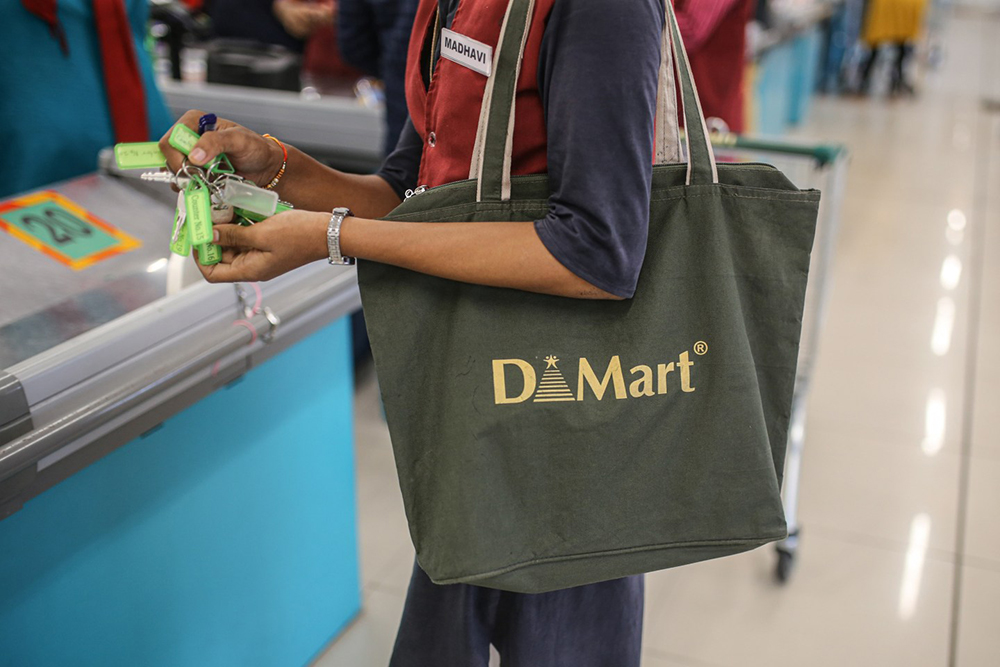
Avenue Supermarts在印度经营D-mart品牌的超市。该公司采用B2C模式,没有中间商, 直接从制造商采购商品并出售给消费者,因此可以维持低价。Avenue还拥有超市所占用土地的所有权,减少了物业支出。
3.北京金山办公软件股份有限公司
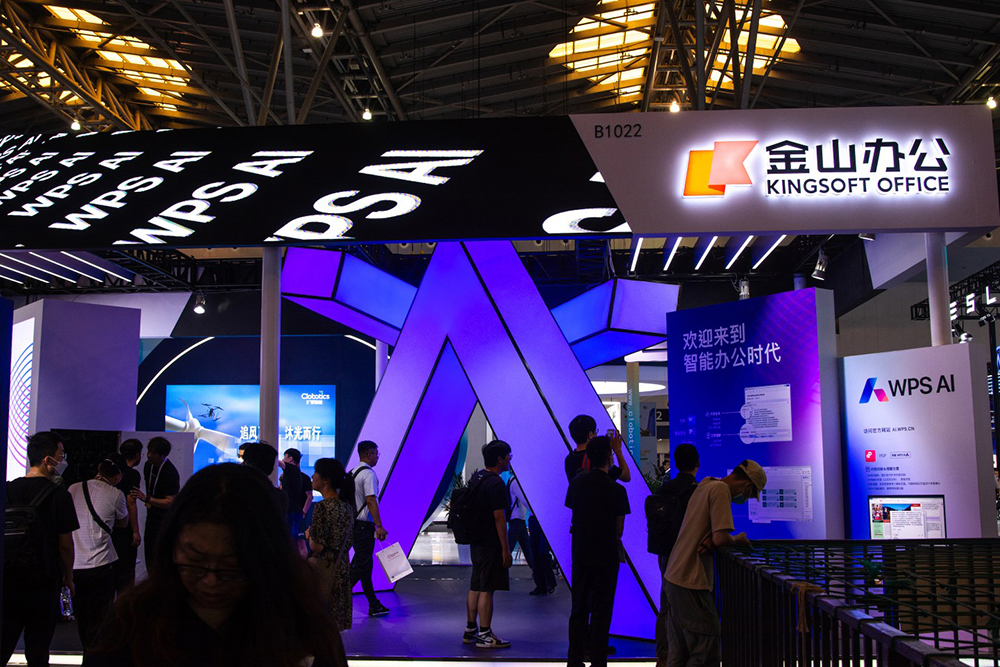
北京金山办公软件股份有限公司开发和运营WPS(文字、演示文稿和数据表)系列办公软件。这家公司正在探索如何在其产品中整合生成式人工智能功能。该公司是软件开发公司金山软件的子公司。金山软件涉足视频游戏开发、移动开发和云计算等领域。
4.北京万泰生物药业股份有限公司

北京万泰生物药业股份有限公司是中国领先的疫苗开发商之一,公司生产了国内首款对外出口的HPV疫苗,目前正在开发针对新冠病毒及其他疾病的无需注射的鼻喷疫苗。北京万泰生物药业的所有人为中国首富钟睒睒,他也是农夫山泉瓶装水公司的创始人。
5.比亚迪
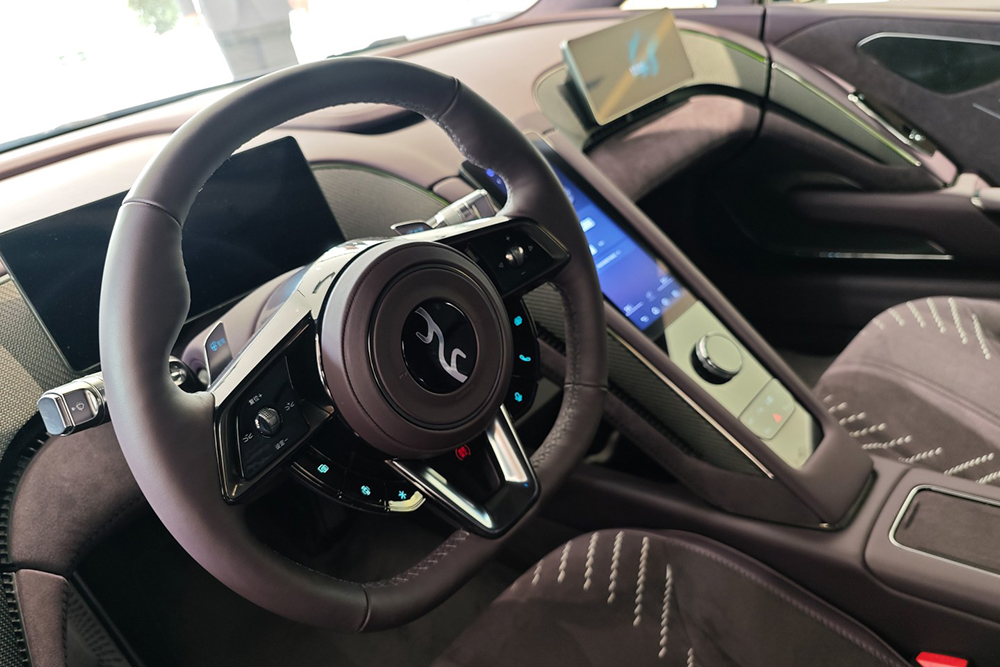
比亚迪得到了沃伦·巴菲特的伯克希尔-哈撒韦公司(Berkshire Hathaway)的投资。毫无疑问,比亚迪是中国最成功的电动汽车厂商,并在2023年最后一个季度超越了美国汽车厂商特斯拉(Tesla),成为电池电动汽车销量最高的公司。比亚迪在电池生产方面的经验可能是其成功的秘诀,使其通过整合供应链实现了更高的利润率。比亚迪正在进行海外扩张。
6.Celltrion
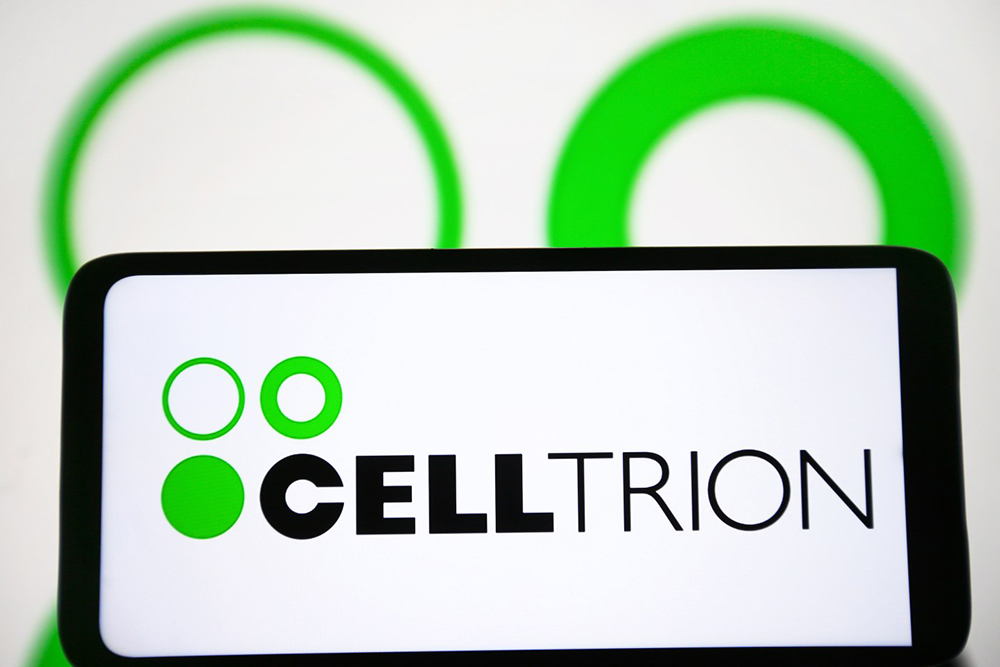
Celltrion作为一家生物科技公司,致力于开发“生物类似药”,即与市场上的其他产品类似的生物医疗制品,但成本更低。Celltrion目前正在全球拓展业务,合并了其经销业务部门Celltrion Healthcare,以更有效地在全球销售药品。
7.宁德时代新能源科技股份有限公司

宁德时代的全球市场占有率为35%,特斯拉、宝马(BMW)和蔚来都是其客户。作为在全球占据主导地位的电动汽车电池制造商,宁德时代在2023年凭借其营收首次登上《财富》世界500强榜单。该公司正在将供应链多元化,在中国境外建设了更多的工厂,并且其产品范围逐渐扩展到太阳能和风能发电的储能设备。
8.台达电子(泰国)
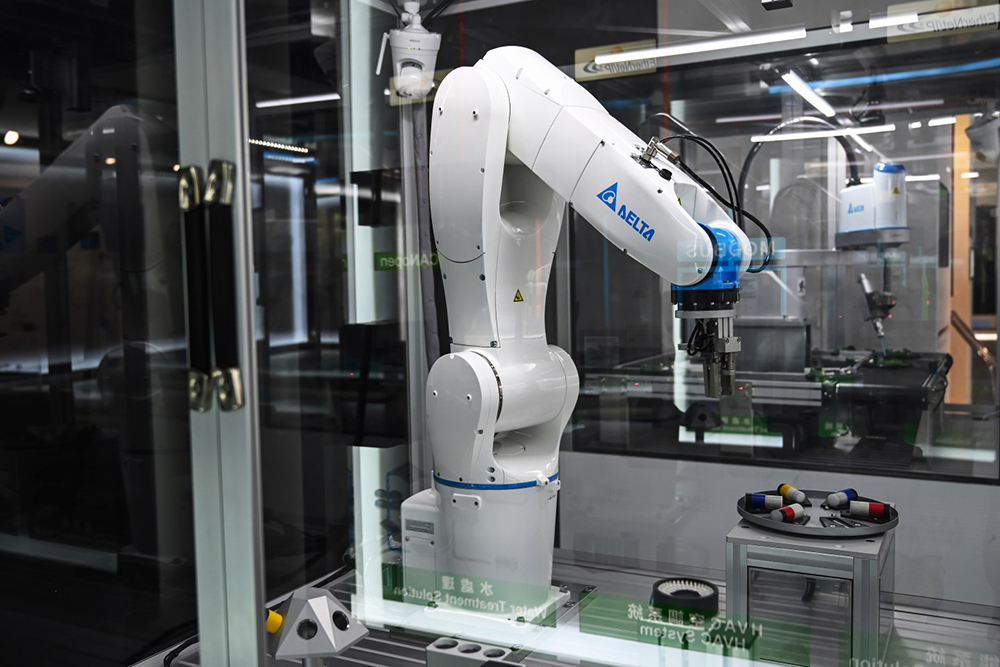
台达电子(泰国)是中国台湾公司台达电子(Delta Electronics)的子公司,主要生产和经销电子产品。泰国子公司负责集团最有前途的两个领域:数据中心和电动汽车。在撰稿时,台达电子(泰国)是泰国最有价值的公司。
9.惠州亿纬锂能股份有限公司
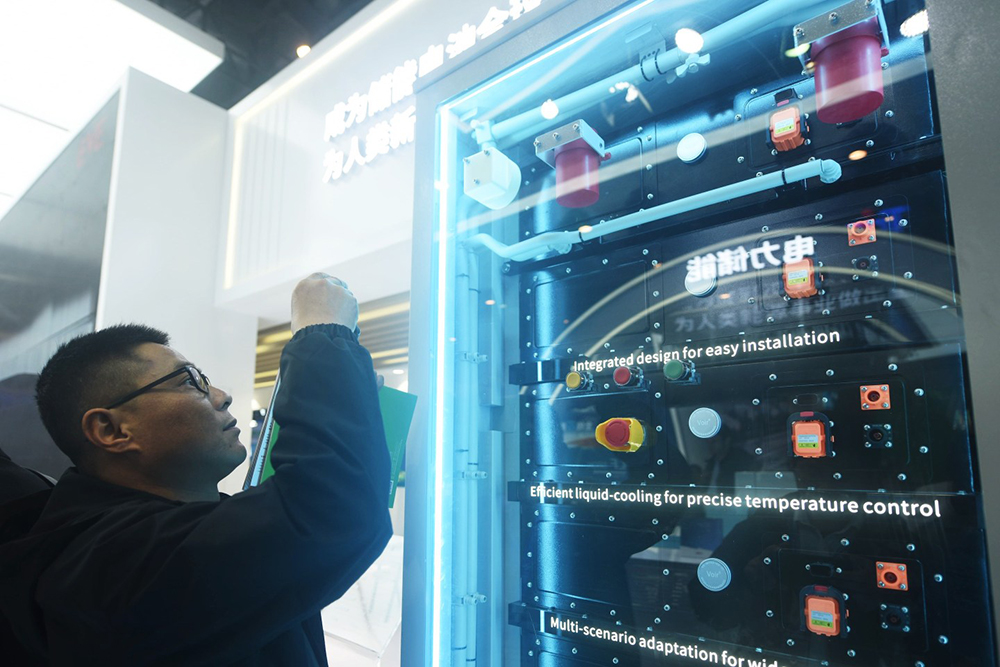
惠州亿纬锂能股份有限公司总部位于中国惠州,公司为大到电动SUV汽车、小到电子烟等各种产品生产锂离子电池。电动汽车的繁荣带动了公司业务的增长,但现在亿纬锂能增长最快的产品包括存储太阳能阵列和风电场电力的蓄电系统。
10.杭州福斯特应用材料股份有限公司

杭州福斯特应用材料股份有限公司是中国在太阳能发电行业占据主导地位(和政府发放补贴)的推动力之一。该公司占据全球“光伏胶膜”市场约50%的份额。光伏胶膜可覆盖或包裹太阳能电池,使电池免受外界因素的影响。
11.恒生电子股份有限公司
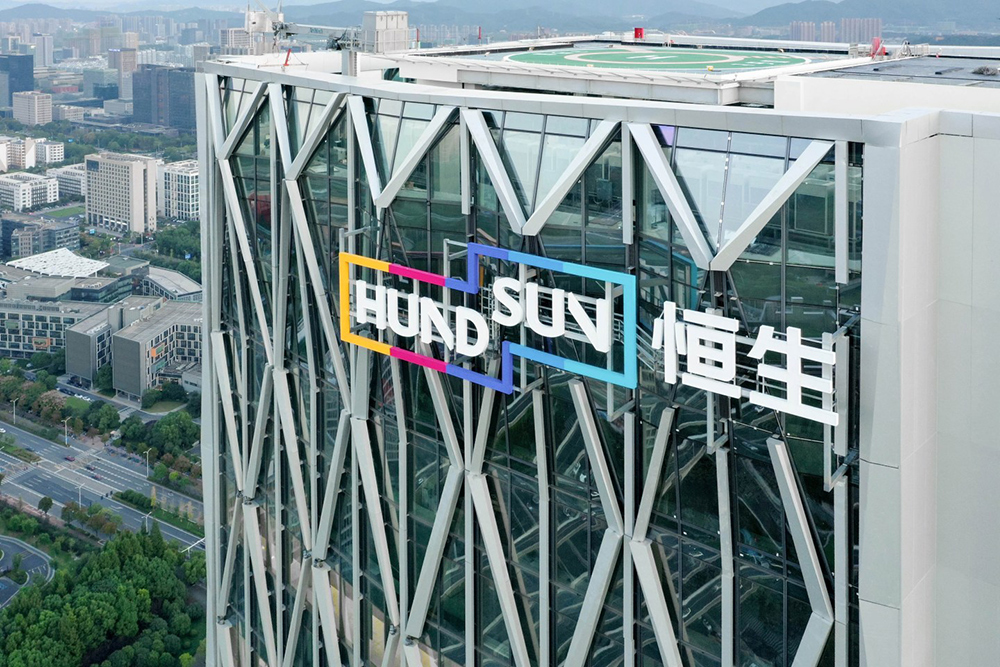
中国金融科技公司恒生电子提供一系列服务,帮助其他金融公司更顺利地开展业务,包括识别和阻止洗钱的技术,以及一款可以帮助用户从报告和档案中检索关键数据的基于人工智能的聊天机器人。
12.爱美客技术发展股份有限公司
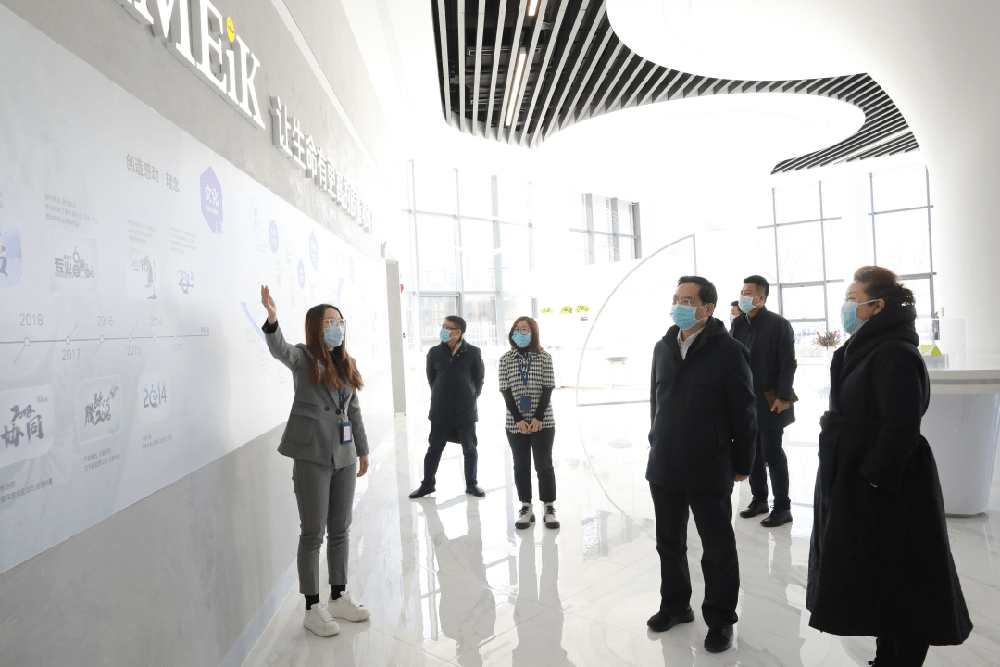
爱美客专注于生物医学材料及生物医疗产品的研发与转化,产品临床应用涵盖医疗美容、代谢疾病治疗等领域。爱美客成立于2004年,公司总部位于中国北京,是中国销售额最高的透明质酸皮肤填充剂厂商。透明质酸皮肤填充剂是一种非常受欢迎的抗老化治疗产品。
13.晶澳太阳能科技股份有限公司
晶澳太阳能是中国在全球占据主导地位的太阳能行业的重要参与者,该公司帮助降低了太阳能电池的成本,为绿色转型做出了贡献。这家公司的太阳能电池具有强大的盈利能力:公司通过成本管理实现了每瓦最高的净利润。
14.京东健康股份有限公司

这家在线药品、医疗用品和医疗服务销售商最初是电商巨头京东的一个部门,2019年从母公司剥离。京东健康的成功体现出中国医疗保健体系的碎片化状态,在大城市以外的地区往往很难获得医疗保健服务。该公司还经营100多家实体药店。
15.江苏恒立液压股份有限公司
江苏恒立液压股份有限公司从事挖掘机、农业机械和隧道掘进机等重型机械使用的液压元件生产。该公司启动了在欧美市场的扩张计划,收购了一家德国泵供应商。
16.Kakao
Kakao与Naver是韩国的两大互联网巨头。Kakao旗下的KakaoTalk是韩国最受欢迎的通信服务。此外,公司还提供游戏、电子商务、网约车和金融科技等其他服务。KakaoTalk有4,700万月活跃用户,相当于韩国总人口的90%以上。该公司还计划增加对人工智能的投资,包括长期投资生成式人工智能和医疗保健。
17.Lasertec
Lasertec公司专注于检验与测量设备的设计和制造,是唯一一家供应极紫外光刻(EUV)检验设备的公司。EUV是生产最新设备使用的最先进芯片的关键。
18.理想汽车

理想汽车是中国主要的电动汽车初创公司之一,与蔚来和小鹏并列。理想汽车创立于2015年,总部位于中国北京,创始人为李想,公司的目标是高端汽车市场,其汽车的售价与特斯拉等公司的车型竞争。理想汽车主要生产混合动力运动型多功能汽车,但在2024年年初推出了首款纯电动汽车。
19.LTI Mindtree

2022年L&T Infotech与Mindtree合并之后成立的LTIMindtree,现在是印度营收排在第六位的科技咨询公司。该公司在银行和金融服务以及科技与传媒领域,拥有强大的客户基础。
20.M3
M3是日本最大的医疗信息网站提供商,为医生和其他从业人员提供医疗相关服务。麦肯锡(McKinsey)的前顾问谷村格(Itaru Tanimura)于2000年创建了该公司。M3声称其为日本32万名医生和全球超过650万名医生提供服务。
21.美团
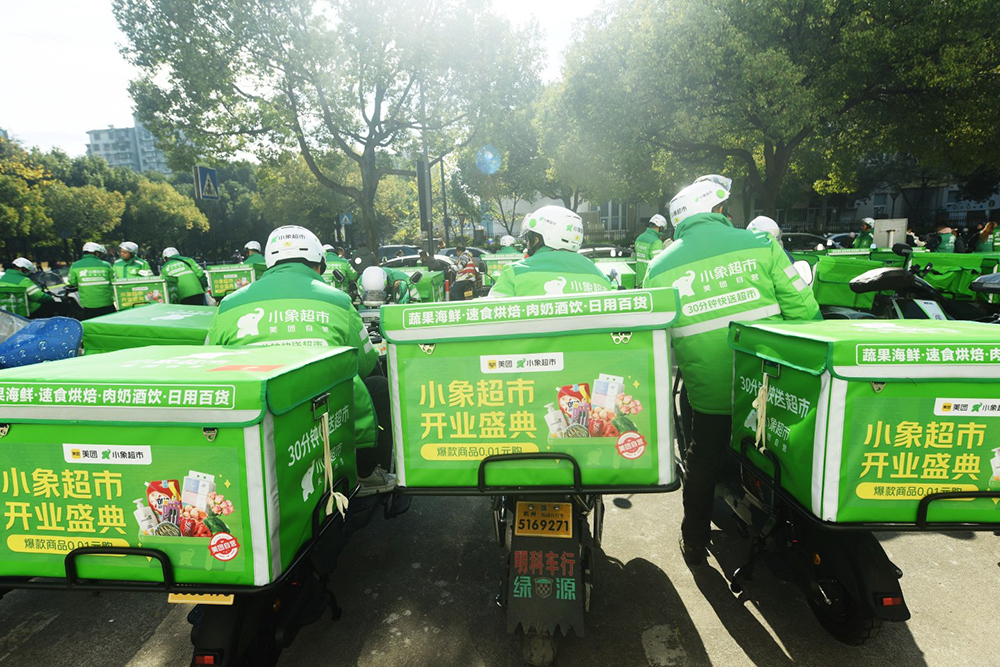
中国电商公司美团在送餐行业遥遥领先,占据了70%的市场份额。2023年5月,美团在中国香港推出了KeeTa,这是该公司在中国大陆以外进行的首次大规模尝试,如今KeeTa已经是香港第二大送餐平台。美团还在尝试进军人工智能领域,并收购了由美团的联合创始人王慧文创建的初创公司光年之外。
22.Naver
Naver是韩国最受欢迎的搜索引擎,市场占有率达到70%,此外,公司还开展云计算和电商业务。Naver通过一家与软银(Softbank)的合资公司,旗下运营着日本重要的通信应用程序Line。该公司收购了美国服装转售平台Poshmark和用户创作写作平台Wattpad。
23.蔚来汽车
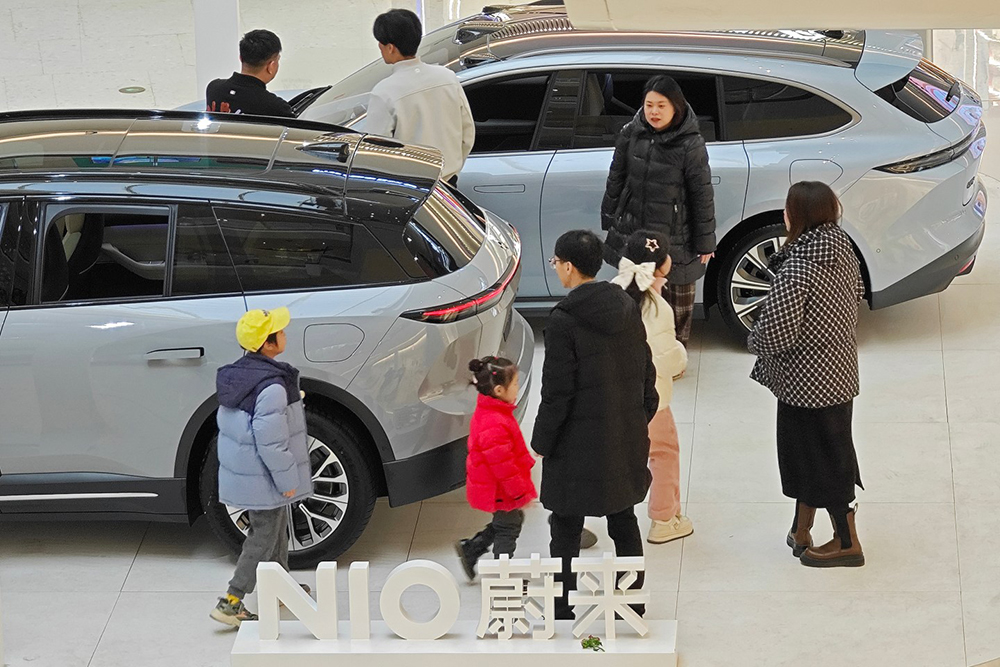
蔚来汽车从事智能电动汽车的设计、制造和销售。公司依托高端品牌形象、自动驾驶技术和换电模式,在竞争激烈的中国电动汽车市场脱颖而出。该电动汽车初创公司创立于2014年,总部位于中国上海,获得了阿联酋阿布扎比投资基金CYVN的投资。
24.Posco Future M
韩国公司Posco Future M及其子公司生产锂离子电池材料。这家总部位于浦项的公司是韩国唯一一家电池正极和负极材料生产商。
25.深圳市汇川技术股份有限公司

深圳市汇川技术股份有限公司是工业机器人电路系统和其他零部件的主要提供商;其产品尤其在汽车行业有较高的需求。该公司已经开始多元化发展,涉足其他机器人,包括仓储无人机的组件。
26.阳光电源股份有限公司
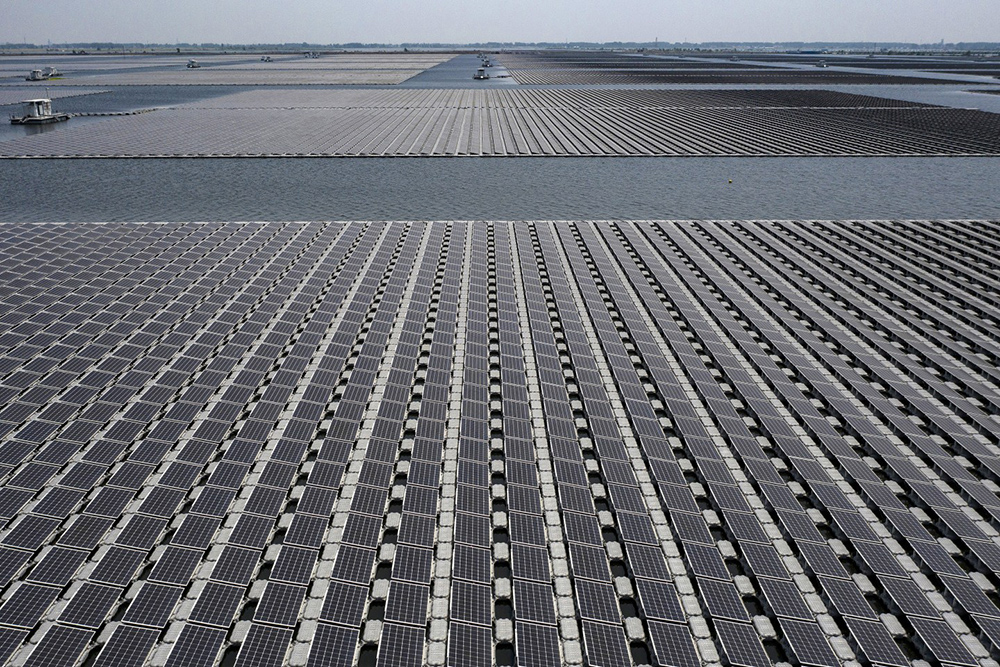
阳光电源股份有限公司总部位于中国合肥,公司制造和销售太阳能与风能发电和储能设备。最值得关注的是,该公司是全球最大的光伏逆变器制造商。光伏逆变器将太阳能面板的能量转变成可在公用电网中使用的交流电。
27.苏州迈为科技股份有限公司
苏州迈为科技股份有限公司是一家泛半导体高端装备制造商,产品面向光伏、显示、半导体三大行业。公司研制的异质结电池整线装备为光伏太阳能行业实现了更高效率、更低衰减率、更少碳足迹的异质结电池的大规模量产。
28.携程集团

携程集团是全球领先的旅游服务提供商,总部位于中国上海,旗下包括Trip.com、携程、Skyscanner(天巡)和去哪儿网。世界各地的用户可以使用这家公司的平台预订一系列服务,包括住宿、交通和旅行团。
29.慧咨环球有限公司
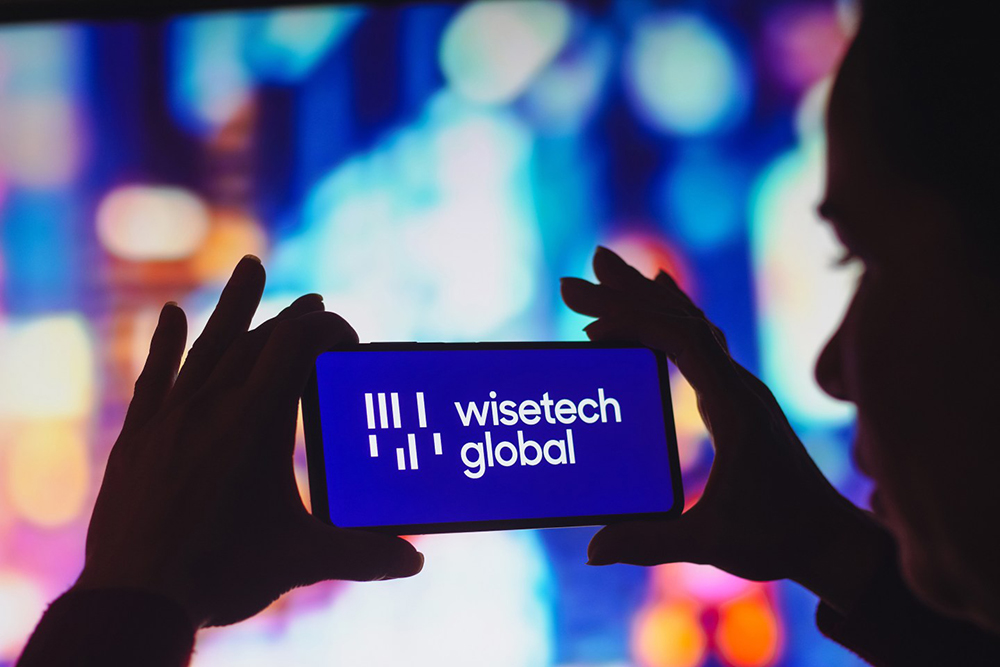
慧咨环球是一家为全球物流行业提供软件解决方案的开发商和提供商。其客户包括全球25家最大的货运代理公司。经过几次关键收购后,该公司的全球海关和合规体系覆盖了全球70%以上的制造业产品贸易流量。
30.无锡药明康德
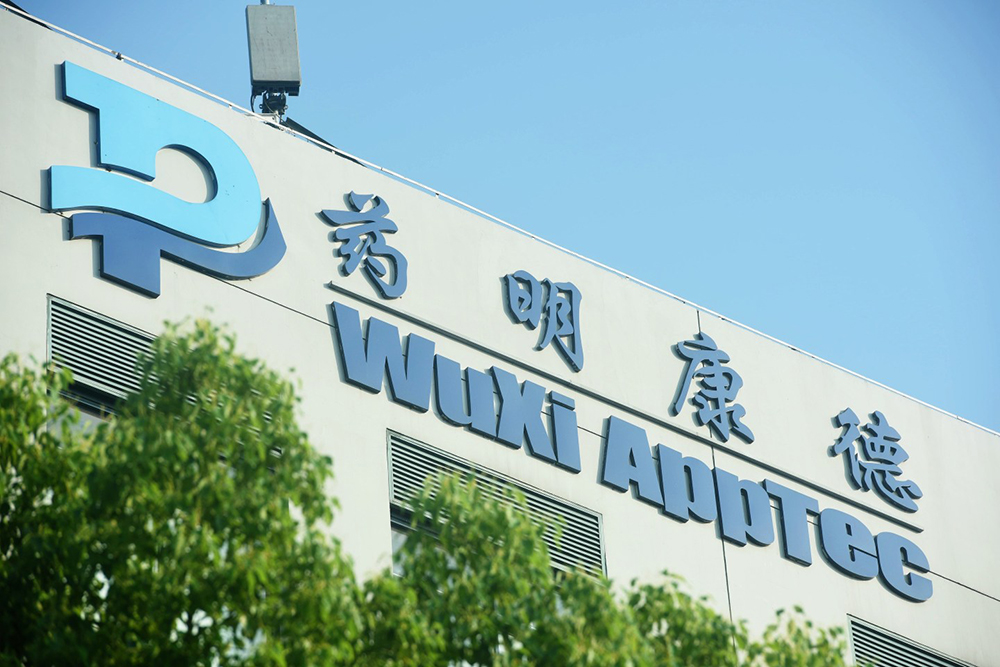
无锡药明康德总部位于中国上海,为医疗行业提供一体化的药物研发和生产服务。公司创立于2000年,原名无锡药明康德新药开发有限公司,2008年收购美国AppTec Laboratory Services公司后,变更为现在的名称。
亚洲未来30强:创新者成为增长引擎
世界充满了不确定性。人工智能让企业高管陷入“错失焦虑症”(FOMO),而高度紧张的地缘政治局势和战争正在影响领导者的思维。亚洲也不例外:虽然亚洲地区并没有经历西方国家的严重通胀和加息,但经济学家担忧,中国的房地产市场的调整有可能影响到整个亚洲地区。
数十年来,亚洲人民的生活水平持续提升,数十亿亚洲人希望这种趋势能够持续。尽管经济学家们预测的GDP增长速度为“个位数中段”,但这并不意味着这个预测一定可以实现。而且在动荡的局势下,更难判断哪些公司将推动GDP增长,使投资者很难做出决策。
为了阐明这一问题,《财富》与波士顿咨询公司(Boston Consulting Group)合作开发了活力指标,用于量化公司的长期增长潜力。该指标基于两个支柱:对公司增长潜力基于市场的自上而下的评估;对公司的交付能力基于技术、结构和战略定位等因素自下而上的分析。活力指标是《财富》未来50强榜单的基础。自2017年《财富》未来50强榜单首次发布以来,每年都会评选出全球最具有活力的上市公司。
作为全球分析的补充,我们首次创建了一个区域榜单:亚洲未来30强。该榜单记录了亚洲增长和创新潜力最大的公司。我们决定重点关注亚洲未来30强中前20家最具有活力的中国公司,以及其他亚洲国家最具有活力的10家公司,以突出具有增长潜力的热点地区。
那么,亚洲哪些地区具有创新潜力?创新背后的动力源自什么?要实现潜力必须解决哪些挑战?
中国:强劲的增长潜力——由三个关键趋势推动
大中华地区一直是全球增长潜力的重要支撑点。《财富》未来50强公司有30%来自这一地区。
通过分析亚洲未来30强中的中国公司,可以发现它们的创新潜力源于三大趋势:
第一,绿色科技企业,尤其是太阳能面板和电池制造商,在榜单上占据了重要位置,这得益于政府的扶持,包括补贴和雄心勃勃的可再生能源目标,还有获取关键原材料的途径,以及全球对于快速脱碳的渴望。
第二,人工智能领域的先行者为未来增长奠定了基础。北京金山软件、恒生电子和京东健康等软件公司,已经在陆续推出基于生成式人工智能的解决方案,以开辟新的收入来源。而且不只是数字公司:理想汽车和蔚来等电动汽车厂商也在积极投资先进的辅助驾驶系统。
第三,上榜的中国公司都有进军全球市场的雄心。作为全球最大的电动汽车制造商,比亚迪的汽车销量有90%来自中国市场,但公司正在大力投资以改变这种局面。拼多多由于总部位于爱尔兰都柏林,因此未能入选亚洲未来30强榜单,但它仍然是一家中国公司。据媒体报道,该公司已经在美国为其新平台Temu投入了超过30亿美元,用于线上获客。
但中国也面临着一些挑战。房地产的变化依旧有可能抑制消费,拖累关键经济板块。
最后,据联合国(United Nations)预测,到2100年,中国将成为全球人口老龄化问题最严重的国家,而且中国人口萎缩的趋势已经开始。随着劳动力减少,中国政府和私营部门需要面对的是如何建设繁荣的老龄化社会这个艰巨任务。
亚洲的其他增长热点区域
亚洲未来30强榜单包括10家非中国公司。其中四家公司来自韩国的工业和通信服务行业,包括电池组件制造商Posco以及Naver与Kakao等科技巨头——后两家公司正在将业务拓展到直播、广告和金融科技等利润更高的领域。
韩国公司正在充分利用国内不断增长的中产阶级和快速的实验性产品研发。韩国引领了许多全球趋势,例如韩流音乐和韩国美容等。
印度和日本分别有两家公司上榜亚洲未来30强,体现出这两个经济体的创新潜力。
但所有亚洲国家都面临相同的风险:它们在某种程度上都依赖强大的中国经济。各经济体还面临独特的挑战:日本和韩国已经是全球人口老龄化最严重的国家。而印度需要在快速增长的同时保持国家稳定,并继续提升庞大人口的技能水平,才能通过出口导向的增长向经济价值链的上游跃升。
前景展望
回顾性分析显示,亚洲未来30强公司的营收增长明显优于同行。从2020年上半年到2023年上半年,这些公司的营收平均年复合增长率为51%,而标准普尔泛亚BMI指数(S&P Pan Asia BMI)排名前500位的公司,平均增长率为6%。以往的表现并不可以保证未来的成功,但亚洲未来30强公司能够实现价值创造增长。
如果亚洲未来30强公司想要保持强劲的增长势头,就必须保证它们始终站在新技术的前沿。政府也要发挥作用,帮助这些公司应对重大的宏观经济和地缘政治风险。
毕竟,新公司总是不断涌现。亚洲未来30强公司侧重于上市公司,但在IPO市场可能也有许多令人瞩目的公司,预计将在2024年上市,比如快时尚平台Shein、物流网络菜鸟和电动滑板车公司Ola Electric等。它们可能会改变明年的亚洲未来30强榜单。
作者:Fang Ruan、Ketil Gjerstad、Johann Harnoss、Martin Reeves、Adam Job
制榜方法
为了评选“亚洲未来30强”,波士顿咨询公司旗下的BCG亨德森研究所(BCG Henderson Institute)调查了亚太地区约700家截至2022年年底市值不低于100亿美元或2022年营收不少于100亿美元的上市公司。
评选团队评估了公司的市场潜力,即由金融市场确定的未来增长预期。评估方法为计算剔除公司现有商业模式的收入流之后的市场价值所占的比例。
我们还根据19个因素评估公司实现市场潜力的能力,并利用机器学习算法对公司的增长能力赋予权重,以预测公司未来五年的增长潜力。这些因素分为四个维度:
战略
我们的人工智能算法通过自然语言处理,根据公司的年报识别其战略定位。我们还根据数据分析公司Arabesque的治理评级,评估公司的可持续性承诺。
技术与投资
通过公司的资本支出和研发(占总销售额的比例)预测公司未来的投资。根据公司引用加权专利组合增长情况和专利组合的数字密集程度(计算和电子通信专利占比),评估公司的技术优势。为了说明外部创新的影响,我们将公司的创始投资和收购组合与业绩最好的全球风险投资基金进行对比。
人才
我们根据公司高管和董事的年龄与稳定性以及董事会的规模,评估年轻、专注的领导力的价值。我们根据公司女性员工和管理者的比例以及公司董事的地域分布,评估公司的多元化水平。
结构
公司的年限和(基于营收的)规模,与活力下降密切相关。但最近三年半的销售额增长可以作为公司恢复活力的标志,预示着公司未来将实现增长。
如果公司过去三年的平均营运现金流为负,这表明其业绩风险升高,将被剔除出本榜单。(财富中文网)
译者:Biz
在宏观经济环境持续的不确定性、地缘政治等因素可能会在亚太地区引发冲击波的背景下,首期《财富》亚洲未来30强榜单凸显了该地区的活力热点。通过运用量化企业长期增长潜力的活力指数,《财富》与波士顿咨询公司(Boston Consulting Group)合作,聚焦于具有高活力的亚洲企业,包括来自中国的前20名最具活力的企业,以及来自亚洲其他国家的前10名企业。
这份未排名的亚洲未来30强榜单确定了推动中国企业创新潜力的三个关键趋势:世界对绿色技术的渴望、人工智能革命以及中国数字市场和电动汽车制造商的全球扩张计划。在中国以外,增长潜力的热点集中在韩国、印度和日本。以下为2024年的榜单。
1.阿里健康信息技术有限公司
阿里健康信息技术有限公司是一家上市公司,但电商巨头阿里巴巴集团持有多数股份。这家公司从事在线药物销售、医疗诊断和其他医疗保健服务。在存在看病难问题的中国医疗市场,该公司填补了一个空白。
2.Avenue Supermarts
Avenue Supermarts在印度经营D-mart品牌的超市。该公司采用B2C模式,没有中间商, 直接从制造商采购商品并出售给消费者,因此可以维持低价。Avenue还拥有超市所占用土地的所有权,减少了物业支出。
3.北京金山办公软件股份有限公司
北京金山办公软件股份有限公司开发和运营WPS(文字、演示文稿和数据表)系列办公软件。这家公司正在探索如何在其产品中整合生成式人工智能功能。该公司是软件开发公司金山软件的子公司。金山软件涉足视频游戏开发、移动开发和云计算等领域。
4.北京万泰生物药业股份有限公司
北京万泰生物药业股份有限公司是中国领先的疫苗开发商之一,公司生产了国内首款对外出口的HPV疫苗,目前正在开发针对新冠病毒及其他疾病的无需注射的鼻喷疫苗。北京万泰生物药业的所有人为中国首富钟睒睒,他也是农夫山泉瓶装水公司的创始人。
5.比亚迪
比亚迪得到了沃伦·巴菲特的伯克希尔-哈撒韦公司(Berkshire Hathaway)的投资。毫无疑问,比亚迪是中国最成功的电动汽车厂商,并在2023年最后一个季度超越了美国汽车厂商特斯拉(Tesla),成为电池电动汽车销量最高的公司。比亚迪在电池生产方面的经验可能是其成功的秘诀,使其通过整合供应链实现了更高的利润率。比亚迪正在进行海外扩张。
6.Celltrion
Celltrion作为一家生物科技公司,致力于开发“生物类似药”,即与市场上的其他产品类似的生物医疗制品,但成本更低。Celltrion目前正在全球拓展业务,合并了其经销业务部门Celltrion Healthcare,以更有效地在全球销售药品。
7.宁德时代新能源科技股份有限公司
宁德时代的全球市场占有率为35%,特斯拉、宝马(BMW)和蔚来都是其客户。作为在全球占据主导地位的电动汽车电池制造商,宁德时代在2023年凭借其营收首次登上《财富》世界500强榜单。该公司正在将供应链多元化,在中国境外建设了更多的工厂,并且其产品范围逐渐扩展到太阳能和风能发电的储能设备。
8.台达电子(泰国)
台达电子(泰国)是中国台湾公司台达电子(Delta Electronics)的子公司,主要生产和经销电子产品。泰国子公司负责集团最有前途的两个领域:数据中心和电动汽车。在撰稿时,台达电子(泰国)是泰国最有价值的公司。
9.惠州亿纬锂能股份有限公司
惠州亿纬锂能股份有限公司总部位于中国惠州,公司为大到电动SUV汽车、小到电子烟等各种产品生产锂离子电池。电动汽车的繁荣带动了公司业务的增长,但现在亿纬锂能增长最快的产品包括存储太阳能阵列和风电场电力的蓄电系统。
10.杭州福斯特应用材料股份有限公司
杭州福斯特应用材料股份有限公司是中国在太阳能发电行业占据主导地位(和政府发放补贴)的推动力之一。该公司占据全球“光伏胶膜”市场约50%的份额。光伏胶膜可覆盖或包裹太阳能电池,使电池免受外界因素的影响。
11.恒生电子股份有限公司
中国金融科技公司恒生电子提供一系列服务,帮助其他金融公司更顺利地开展业务,包括识别和阻止洗钱的技术,以及一款可以帮助用户从报告和档案中检索关键数据的基于人工智能的聊天机器人。
12.爱美客技术发展股份有限公司
爱美客专注于生物医学材料及生物医疗产品的研发与转化,产品临床应用涵盖医疗美容、代谢疾病治疗等领域。爱美客成立于2004年,公司总部位于中国北京,是中国销售额最高的透明质酸皮肤填充剂厂商。透明质酸皮肤填充剂是一种非常受欢迎的抗老化治疗产品。
13.晶澳太阳能科技股份有限公司
晶澳太阳能是中国在全球占据主导地位的太阳能行业的重要参与者,该公司帮助降低了太阳能电池的成本,为绿色转型做出了贡献。这家公司的太阳能电池具有强大的盈利能力:公司通过成本管理实现了每瓦最高的净利润。
14.京东健康股份有限公司
这家在线药品、医疗用品和医疗服务销售商最初是电商巨头京东的一个部门,2019年从母公司剥离。京东健康的成功体现出中国医疗保健体系的碎片化状态,在大城市以外的地区往往很难获得医疗保健服务。该公司还经营100多家实体药店。
15.江苏恒立液压股份有限公司
江苏恒立液压股份有限公司从事挖掘机、农业机械和隧道掘进机等重型机械使用的液压元件生产。该公司启动了在欧美市场的扩张计划,收购了一家德国泵供应商。
16.Kakao
Kakao与Naver是韩国的两大互联网巨头。Kakao旗下的KakaoTalk是韩国最受欢迎的通信服务。此外,公司还提供游戏、电子商务、网约车和金融科技等其他服务。KakaoTalk有4,700万月活跃用户,相当于韩国总人口的90%以上。该公司还计划增加对人工智能的投资,包括长期投资生成式人工智能和医疗保健。
17.Lasertec
Lasertec公司专注于检验与测量设备的设计和制造,是唯一一家供应极紫外光刻(EUV)检验设备的公司。EUV是生产最新设备使用的最先进芯片的关键。
18.理想汽车
理想汽车是中国主要的电动汽车初创公司之一,与蔚来和小鹏并列。理想汽车创立于2015年,总部位于中国北京,创始人为李想,公司的目标是高端汽车市场,其汽车的售价与特斯拉等公司的车型竞争。理想汽车主要生产混合动力运动型多功能汽车,但在2024年年初推出了首款纯电动汽车。
19.LTI Mindtree
2022年L&T Infotech与Mindtree合并之后成立的LTIMindtree,现在是印度营收排在第六位的科技咨询公司。该公司在银行和金融服务以及科技与传媒领域,拥有强大的客户基础。
20.M3
M3是日本最大的医疗信息网站提供商,为医生和其他从业人员提供医疗相关服务。麦肯锡(McKinsey)的前顾问谷村格(Itaru Tanimura)于2000年创建了该公司。M3声称其为日本32万名医生和全球超过650万名医生提供服务。
21.美团
中国电商公司美团在送餐行业遥遥领先,占据了70%的市场份额。2023年5月,美团在中国香港推出了KeeTa,这是该公司在中国大陆以外进行的首次大规模尝试,如今KeeTa已经是香港第二大送餐平台。美团还在尝试进军人工智能领域,并收购了由美团的联合创始人王慧文创建的初创公司光年之外。
22.Naver
Naver是韩国最受欢迎的搜索引擎,市场占有率达到70%,此外,公司还开展云计算和电商业务。Naver通过一家与软银(Softbank)的合资公司,旗下运营着日本重要的通信应用程序Line。该公司收购了美国服装转售平台Poshmark和用户创作写作平台Wattpad。
23.蔚来汽车
蔚来汽车从事智能电动汽车的设计、制造和销售。公司依托高端品牌形象、自动驾驶技术和换电模式,在竞争激烈的中国电动汽车市场脱颖而出。该电动汽车初创公司创立于2014年,总部位于中国上海,获得了阿联酋阿布扎比投资基金CYVN的投资。
24.Posco Future M
韩国公司Posco Future M及其子公司生产锂离子电池材料。这家总部位于浦项的公司是韩国唯一一家电池正极和负极材料生产商。
25.深圳市汇川技术股份有限公司
深圳市汇川技术股份有限公司是工业机器人电路系统和其他零部件的主要提供商;其产品尤其在汽车行业有较高的需求。该公司已经开始多元化发展,涉足其他机器人,包括仓储无人机的组件。
26.阳光电源股份有限公司
阳光电源股份有限公司总部位于中国合肥,公司制造和销售太阳能与风能发电和储能设备。最值得关注的是,该公司是全球最大的光伏逆变器制造商。光伏逆变器将太阳能面板的能量转变成可在公用电网中使用的交流电。
27.苏州迈为科技股份有限公司
苏州迈为科技股份有限公司是一家泛半导体高端装备制造商,产品面向光伏、显示、半导体三大行业。公司研制的异质结电池整线装备为光伏太阳能行业实现了更高效率、更低衰减率、更少碳足迹的异质结电池的大规模量产。
28.携程集团
携程集团是全球领先的旅游服务提供商,总部位于中国上海,旗下包括Trip.com、携程、Skyscanner(天巡)和去哪儿网。世界各地的用户可以使用这家公司的平台预订一系列服务,包括住宿、交通和旅行团。
29.慧咨环球有限公司
慧咨环球是一家为全球物流行业提供软件解决方案的开发商和提供商。其客户包括全球25家最大的货运代理公司。经过几次关键收购后,该公司的全球海关和合规体系覆盖了全球70%以上的制造业产品贸易流量。
30.无锡药明康德
无锡药明康德总部位于中国上海,为医疗行业提供一体化的药物研发和生产服务。公司创立于2000年,原名无锡药明康德新药开发有限公司,2008年收购美国AppTec Laboratory Services公司后,变更为现在的名称。
亚洲未来30强:创新者成为增长引擎
世界充满了不确定性。人工智能让企业高管陷入“错失焦虑症”(FOMO),而高度紧张的地缘政治局势和战争正在影响领导者的思维。亚洲也不例外:虽然亚洲地区并没有经历西方国家的严重通胀和加息,但经济学家担忧,中国的房地产市场的调整有可能影响到整个亚洲地区。
数十年来,亚洲人民的生活水平持续提升,数十亿亚洲人希望这种趋势能够持续。尽管经济学家们预测的GDP增长速度为“个位数中段”,但这并不意味着这个预测一定可以实现。而且在动荡的局势下,更难判断哪些公司将推动GDP增长,使投资者很难做出决策。
为了阐明这一问题,《财富》与波士顿咨询公司(Boston Consulting Group)合作开发了活力指标,用于量化公司的长期增长潜力。该指标基于两个支柱:对公司增长潜力基于市场的自上而下的评估;对公司的交付能力基于技术、结构和战略定位等因素自下而上的分析。活力指标是《财富》未来50强榜单的基础。自2017年《财富》未来50强榜单首次发布以来,每年都会评选出全球最具有活力的上市公司。
作为全球分析的补充,我们首次创建了一个区域榜单:亚洲未来30强。该榜单记录了亚洲增长和创新潜力最大的公司。我们决定重点关注亚洲未来30强中前20家最具有活力的中国公司,以及其他亚洲国家最具有活力的10家公司,以突出具有增长潜力的热点地区。
那么,亚洲哪些地区具有创新潜力?创新背后的动力源自什么?要实现潜力必须解决哪些挑战?
中国:强劲的增长潜力——由三个关键趋势推动
大中华地区一直是全球增长潜力的重要支撑点。《财富》未来50强公司有30%来自这一地区。
通过分析亚洲未来30强中的中国公司,可以发现它们的创新潜力源于三大趋势:
第一,绿色科技企业,尤其是太阳能面板和电池制造商,在榜单上占据了重要位置,这得益于政府的扶持,包括补贴和雄心勃勃的可再生能源目标,还有获取关键原材料的途径,以及全球对于快速脱碳的渴望。
第二,人工智能领域的先行者为未来增长奠定了基础。北京金山软件、恒生电子和京东健康等软件公司,已经在陆续推出基于生成式人工智能的解决方案,以开辟新的收入来源。而且不只是数字公司:理想汽车和蔚来等电动汽车厂商也在积极投资先进的辅助驾驶系统。
第三,上榜的中国公司都有进军全球市场的雄心。作为全球最大的电动汽车制造商,比亚迪的汽车销量有90%来自中国市场,但公司正在大力投资以改变这种局面。拼多多由于总部位于爱尔兰都柏林,因此未能入选亚洲未来30强榜单,但它仍然是一家中国公司。据媒体报道,该公司已经在美国为其新平台Temu投入了超过30亿美元,用于线上获客。
但中国也面临着一些挑战。房地产的变化依旧有可能抑制消费,拖累关键经济板块。
最后,据联合国(United Nations)预测,到2100年,中国将成为全球人口老龄化问题最严重的国家,而且中国人口萎缩的趋势已经开始。随着劳动力减少,中国政府和私营部门需要面对的是如何建设繁荣的老龄化社会这个艰巨任务。
亚洲的其他增长热点区域
亚洲未来30强榜单包括10家非中国公司。其中四家公司来自韩国的工业和通信服务行业,包括电池组件制造商Posco以及Naver与Kakao等科技巨头——后两家公司正在将业务拓展到直播、广告和金融科技等利润更高的领域。
韩国公司正在充分利用国内不断增长的中产阶级和快速的实验性产品研发。韩国引领了许多全球趋势,例如韩流音乐和韩国美容等。
印度和日本分别有两家公司上榜亚洲未来30强,体现出这两个经济体的创新潜力。
但所有亚洲国家都面临相同的风险:它们在某种程度上都依赖强大的中国经济。各经济体还面临独特的挑战:日本和韩国已经是全球人口老龄化最严重的国家。而印度需要在快速增长的同时保持国家稳定,并继续提升庞大人口的技能水平,才能通过出口导向的增长向经济价值链的上游跃升。
前景展望
回顾性分析显示,亚洲未来30强公司的营收增长明显优于同行。从2020年上半年到2023年上半年,这些公司的营收平均年复合增长率为51%,而标准普尔泛亚BMI指数(S&P Pan Asia BMI)排名前500位的公司,平均增长率为6%。以往的表现并不可以保证未来的成功,但亚洲未来30强公司能够实现价值创造增长。
如果亚洲未来30强公司想要保持强劲的增长势头,就必须保证它们始终站在新技术的前沿。政府也要发挥作用,帮助这些公司应对重大的宏观经济和地缘政治风险。
毕竟,新公司总是不断涌现。亚洲未来30强公司侧重于上市公司,但在IPO市场可能也有许多令人瞩目的公司,预计将在2024年上市,比如快时尚平台Shein、物流网络菜鸟和电动滑板车公司Ola Electric等。它们可能会改变明年的亚洲未来30强榜单。
作者:Fang Ruan、Ketil Gjerstad、Johann Harnoss、Martin Reeves、Adam Job
制榜方法
为了评选“亚洲未来30强”,波士顿咨询公司旗下的BCG亨德森研究所(BCG Henderson Institute)调查了亚太地区约700家截至2022年年底市值不低于100亿美元或2022年营收不少于100亿美元的上市公司。
评选团队评估了公司的市场潜力,即由金融市场确定的未来增长预期。评估方法为计算剔除公司现有商业模式的收入流之后的市场价值所占的比例。
我们还根据19个因素评估公司实现市场潜力的能力,并利用机器学习算法对公司的增长能力赋予权重,以预测公司未来五年的增长潜力。这些因素分为四个维度:
战略
我们的人工智能算法通过自然语言处理,根据公司的年报识别其战略定位。我们还根据数据分析公司Arabesque的治理评级,评估公司的可持续性承诺。
技术与投资
通过公司的资本支出和研发(占总销售额的比例)预测公司未来的投资。根据公司引用加权专利组合增长情况和专利组合的数字密集程度(计算和电子通信专利占比),评估公司的技术优势。为了说明外部创新的影响,我们将公司的创始投资和收购组合与业绩最好的全球风险投资基金进行对比。
人才
我们根据公司高管和董事的年龄与稳定性以及董事会的规模,评估年轻、专注的领导力的价值。我们根据公司女性员工和管理者的比例以及公司董事的地域分布,评估公司的多元化水平。
结构
公司的年限和(基于营收的)规模,与活力下降密切相关。但最近三年半的销售额增长可以作为公司恢复活力的标志,预示着公司未来将实现增长。
如果公司过去三年的平均营运现金流为负,这表明其业绩风险升高,将被剔除出本榜单。(财富中文网)
译者:Biz
Amid continuing uncertainty, geopolitical tensions, and a looming property crash in China that threatens to send shockwaves across the Asia Pacific, the inaugural Fortune Asia Future 30 highlights hot spots of vitality across the region. By applying the vitality measure, which quantifies companies’ long-term growth potential, Fortune teamed up with BCG to spotlight Asian players with high vitality, including the top 20 most vital players from China, and the top 10 from other countries in Asia.
The unranked Asia Future 30 list identifies three key trends driving the innovative potential of the China players: the world’s desire for green technologies, the AI revolution, and the global expansion plans of Chinese-based digital marketplaces and EV manufacturers. Beyond China, hot spots for growth potential are concentrated in South Korea, India, and Japan.
1.Alibaba Health Information Technology
Publicly traded, but majority owned by e-commerce giant Alibaba Group, Alibaba Health offers online pharmaceutical sales, medical diagnoses, and other health care services online. It has filled a niche in China’s health care market, where in-person medical care can be difficult to access.
2.Avenue Supermarts
Avenue Supermarts operates supermarkets in India under the D-mart brand. The company can sell goods at low prices thanks to its B2C model, cutting out the middleman to get goods directly from manufacturers to sell to consumers. Avenue also owns the land underneath its stores, reducing property expenses.
3.Beijing Kingsoft Office Software
Beijing Kingsoft Office develops and operates the WPS (Writer, Presentation and Spreadsheer) series of office software. The company is exploring how to integrate generative AI features into its programs. The company is a subsidiary of Kingsoft, a software development firm with interests in video game development, mobile development and cloud computing.
4. Beijing Wantai Biological Pharmacy
Beijing Wantai Biological Pharmacy Enterprise is one of China's leading vaccine developers, producing China's first HPV vaccine for export markets. The company is also developing nasal vaccines for COVID and other diseases--no needles required! Beijing Wantai is owned by Zhong Shanshan, China's richest man and the founder of bottled water company Nongfu Spring.
5.BYD
BYD, famously backed by Warren Buffett’s Berkshire Hathaway, is arguably China’s biggest EV success story, dethroning U.S. carmaker Tesla as the world’s top seller of battery electric vehicles in the final quarter of 2023. Yet the company’s experience with battery production could be BYD’s secret sauce, giving it higher margins by consolidating its supply chains. The company is now starting to expand overseas.
6.Celltrion
Celltrion is a biotechnology company that focuses on "biosimilars:" biological medical products that are similar to other products on the market, yet cheaper. Celltrion is now trying to expand its business globally, merging with its distribution unit Celltrion Healthcare to better sell its drugs around the world.
7.Contemporary Amperex Technology
CATL, which counts Tesla, BMW, and Nio as its customers, has captured about 35% of the global market. The world’s dominant battery maker for electric vehicles made its debut in 2023 on the Fortune Global 500 list of the world’s biggest companies by revenue. The company has been diversifying its supply chain, with more of its own factories outside of China, and its product base increasingly includes energy storage for solar and wind power.
8.Delta Electronics (Thailand)
Delta Electronics (Thailand) is a subsidiary of Delta Electronics, a Taiwan-based company that manufactures and distributes electronics. The Thai subsidiary is responsible for two of the group’s most promising segments: Data centers and electric vehicles. At time of writing, Delta Electronics (Thailand) is the Southeast Asian country’s most valuable company.
9.EVE Energy
EVE, headquartered in Huizhou, China, manufactures a wide range of lithium-ion batteries, for products as big as electric SUVs and as small as e-cigarettes. The EV boom has fueled much of that growth, but electric storage systems—the kind that capture energy from solar arrays and wind farms—are now among EVE’s fastest-growing product categories.
10.Hangzhou First Applied Material
Hangzhou First Applied Material is one of the engines of China’s dominance in (and government subsidization of) the solar-power industry. The company holds roughly 50% of the global market for “solar film”—the materials that coat or encase a solar battery and protect it from the elements.
11.Hundsun Technologies
This Chinese fintech company provides a range of services that help other financial firms do business more smoothly, including tech to spot and deter money laundering and an AI-based chatbot that helps users retrieve key data from reports and filings.
12.Imeik Technology Development
Imeik Technology Development focuses on the research, development and production of biomedical materials; the Shenzhen, China-based firm also produces medical devices. Imeik, founded in 2004, is China's top seller of hyaluronic acid dermal filler, a very popular antiaging treatment.
13.JA Solar Technology
JA Solar is part of China's globally-dominant solar industry, helping to make solar cells affordable for the green transition. And it knows how to make money off solar cells: The company has the highest net profit per watt thanks to its cost management.
14.JD Health International
This online seller of pharmaceutical products, medical supplies, and health care services originated as a division of e-commerce giant JD.com, which spun it off in 2019. JD Health’s success reflects the fragmented state of China’s health care system, where medical care can be difficult to obtain outside major cities. The company also operates more than 100 brick-and-mortar pharmacies.
15.Jiangsu Hengli Hydraulic
Jiangsu Hengli Hydraulic produces hydraulic components for heavy machinery, like excavators, agricultural machines and tunnel borers. The company is embarking on expansion plans to Europe and the Americas, snapping up a German pump supplier in the process.
16.Kakao
Kakao is one of Korea's two internet giants, alongside Naver. It runs KakaoTalk, the country's most popular messaging service, as well as a host of other services including games, e-commerce, ride-hailing and fintech. KakaoTalk has 47 million monthly active users, equal to over 90% of Korea's population. The company is also planning to invest more in AI, including long-term bets on generative AI and health care.
17.Lasertec
Lasertec Corporation designs and manufactures inspection and measurement equipment—and is the only company that supplies the inspection systems for extreme ultraviolet lithography, or EUVs. EUV is key to producing the most advanced chips used in the latest devices.
18.Li Auto
Li Auto is one of China's major EV startups, alongside Nio and Xpeng. Founded by Li Xiang in 2015, the Beijing, China-based automaker targets the premium end of the market, competing in price with models from companies like Tesla. Li Auto primarily makes hybrds sports utility vehicles, but released its first battery EV in early 2024.
19.LTI Mindtree
LTIMindtree—formed via the merger in 2022 of the firms L&T Infotech and Mindtree—is now India’s sixth-largest tech consultancy by revenue. It boasts strong client bases in banking and financial services, as well as in tech and media.
20.M3
M3 is Japan's largest medical ifnformation websites provider, providing medical-related services to physicians and other professionals. Itaru Tanimura, a former McKinsey consultant, founded the company in 2000. M3 claims to serve 320,000 physicians in Japan and over 6.5 million worldwide.
21.Meituan
E-commerce company Meituan leads China’s food delivery sector, capturing 70% of the market. Last May, Meituan launched KeeTa in Hong Kong, its first major foray outside mainland China, and is already the city’s second-largest food delivery platform. The company is trying to break into AI, acquiring Light Year, a startup from Meituan founder Wang Huiwen.
22.Naver
Naver is South Korea's most popular search engine, taking 70% of the market, and also has businesses in cloud computing and e-commerce. Naver also owns Line, the major Japanese messaging app, through a joint venture with Softbank. The company acquired both Poshmark, the U.S.-based clothing resale platform, and Wattpad, a platform for user-submitted writing.
23.Nio
Nio designs, manufactures and sells smart electric vehicles, and is banking on a premium brand image, autonomous driving technology and a batter swapping model to help it stand out in China's crowded market. The Shanghai, China-based EV startup, founded in 2014, is backed by CYVN, an Abu Dhabi, UAE investment fund.
24.Posco Future M
South Korean firm Posco Future M, together with its subsidiaries, produces materials for lithium-ion batteries. The Pohang-based company is the only producer of cathode and anode materials in South Korea.
25.Shenzhen Inovance Technology
Shenzhen Inovance Technology is a major provider of circuitry and other components for industrial robots; its products are in particularly high demand in the auto industry. The company has begun diversifying into other robotics—including components for warehouse drones.
26.Sungrow Power Supply
Sungrow, headquartered in Hefei, China, builds and sells equipment for generating and storing solar and wind power. Most notably, it’s the world’s biggest maker of photovoltaic inverters—the devices that convert energy from solar panels into an alternating current that a utility grid can use.
27.Suzhou Maxwell Technologies
Suzhou Maxwell makes the equipment that other companies use to produce "heterojunction"solar cells, longer-lasting and less resource-intensive (but more expensive) than regular solar cells. The Suzhou, China-based company serves a wide array of sectors including consumer electionics, automobiles and and wireless communications.
28.Trip.com Group
Trip.com Group is a leading global travel service provider comprising Trip.com, Ctrip, Skyscanner, and Qunar. Users around the world can use the Shanghai, China-based company's platforms to book a range of services, including accommodation, transport, and package tours.
29.WiseTech Global
WiseTech Global is a developer and provider of software solutions for the global logistics industry. Its customers include all of the 25 largest global freight forwarders. WiseTech’s global customs and compliance system covers more than 70% of global manufactured trade flows after some key acquisitions.
30.WuXi AppTec
Shanghai-based WuXi AppTec focuses on drug discovery, development, and manufacturing. Founded in 2001 as WuXi PharmaTech, the company rebranded to its current name after acquiring the U.S.-based AppTec Laboratory Services in 2008.
The Asia Future 30: Innovators built for growth.
The world's an uncertain place. AI is driving executive FOMO, while high geopolitical tension and war is weighing on leaders' minds. Asia is no exception: While the region has been spared the strong inflation and interest rate hikes seen in the West, economists worry about a property crash in China, which could send a shockwave throughout the region.
Billions of people in Asia hope that the now-decades long increase in living standards continues. While economists forecast GDP growth in the mid-single digits, this is by no means certain to manifest itself. And, given the turmoil, it is even harder to judge which companies are set to drive that growth--making decisions difficult for investors.
To illuminate the matter, Fortune and Boston Consulting Group developed the vitality measure, which quantifies companies’ long-term growth potential. The measure is based on two pillars: A top-down, market-based assessment of a company’s growth potential, and a bottom-up analysis of its capacity to deliver, based on factors like technology, structure, and strategic orientation (read more on our methodology here). This metric underlies the global Future 50 list, which, since its first publication in 2017, has highlighted the most vital, public companies around the world each year.
Complementing our global analysis, we are now creating, for the first time, a regional deep dive: the Asia Future 30. This list chronicles the Asian players with the greatest potential for growth and innovation. We decided to spotlight the top 20 most vital Chinese players in the Asia Future 30 – and to include the top 10 most vital firms from other countries around Asia, highlighting hot spots of growth potential across the region.
So where do we see innovation in Asia? What's driving it? And what are the challenges that must be navigated to turn potential into reality?
China: Strong growth potential – driven by 3 key trends
The Greater China region has long been a stronghold of global growth potential. Thirty percent of the Future 50 firms hail from the region.
A look at the Chinese players among the Asia Future 30 reveals that their innovative potential is driven by three trends:
First, green tech players, in particular, solar panel and battery manufacturers – have a strong presence on the list, thanks to government support in the form of subsidies and ambitious renewable energy targets, access to crucial raw materials, and the world’s desire to decarbonize fast.
Second, early movers on AI are poised for future growth. Software companies like Beijing Kingsoft, Hundsun, and JD Health are already rolling out generative AI-based solutions to unlock new revenue sources. And it's not just digital companies: EV makers like Li Auto and NIO are aggressively investing into advanced driver-assistance systems.
Third, the Chinese companies on the list have global ambitions. Now the world’s largest EV manufacturer, BYD still sells 90% of its cars in China – but is investing heavily to change this. And PDD Holdings--not on the Asia Future 30 due to its Dublin headquarters, but a Chinese-born firm nevertheless--is reported to have spent more than $3 bn on online customer acquisition in the U.S. alone for its new marketplace Temu.
But there are significant risks for Chinese players--and lawmakers--to navigate. The property crisis still threatens to dampen consumption and drag down key sectors of the economy.
Finally, the United Nations projects that China will be the oldest country in the world before the year 2100 – and its population decline has already begun. As the labor force shrinks, both China's government and private sector will face the hard task of creating a flourishing aging society.
Beyond China: Hot spots of growth around Asia
The Asia Future 30 list includes ten companies outside of China. Four of them are located in South Korea, hailing from the industrial and communication services sectors. They include Posco, a manufacturer of battery components, as well as tch giants Naver and Kakao--which are expanding their portfolios to more lucrative areas like livestreaming, advertising and fintech.
Korean companies are capitalizing on the country's growing middle-class and rapid experimental product development. The country is responsible for numerous global trends, like K-pop and K-Beauty.
India and Japan both send two companies each to the Asia Future 30, reflecting the latent potential in both these economies to innovate.
Yet all Asian countries face the same risk: They all depend, to some extent, on a strong Chinese economy. Individual economies also face unique challenges: Japan and South Korea already have some of the oldest populations in the world. India, on the other hand, needs to preserve stability as it rapidly grows--as well as continually re-skill a vast population as it looks to ascend the economic value chain through export-led growth.
Outlook
A retrospective analysis shows that the companies on the Asia Future 30 list significantly outperformed their peers on revenue growth. These players achieved an average compound annual growth rate of 51% on revenue from H1/2020 to H1/2023, whereas the 500 largest firms on the S&P Pan Asia BMI achieved 6% growth on average. Past performance is no guarantee of future success--yet Asia Future 30 firms are positioned for value-creating growth.
If Asia Future 30 companies want to keep their impressive momentum, they need to make sure they stay at the forefront of new technologies. And governments play a role too, in helping these companies navigate significant macroeconomic and geopolitical headwinds.
After all, new companies are always on the rise. The Asia Future 30 companies focuses on public firms, but excitement is also brewing in the IPO market, with big names set to go public in 2024: fast fashion platform Shein, logistics network Cainiao, and EV scooter firm Ola Electric. They may shake up next year's edition of the Asia Future 30.
To identify the Asia Future 30, the BCG Henderson Institute examined around 700 publicly traded companies across the Asia-Pacific region with at least $10 billion in market value at year-end 2022, or $10 billion in revenue through 2022.
Companies were assessed on their market potential—defined as expected future growth as determined by financial markets. This was assessed by calculating the proportion of their market value that is not attributable to the earnings stream from their existing business model.
We also considered a company’s capacity to deliver against this potential based on 19 factors, weighted by a machine learning algorithm for their ability to predict growth over the following five years. These fall into four categories:
Strategy
Our A.I. algorithm relies on natural language processing to detect a company’s strategic orientation from its annual reports. We also assess a company’s commitment to sustainability from its governance rating by Arabesque, a data-analytics firm.
Technology and investments
A company’s capital expenditures and R&D (as a percentage of sales) measure its investment in the future. Technology advantage is assessed through the growth in a company’s citation-weighted patent portfolio and that portfolio’s digital intensity (share in computing and electronic communication). To account for external innovation, a company’s portfolio of start-up investments and acquisitions is compared with best-performing global venture capital funds.
People
The value of youthful and focused leadership is assessed by the age and stability of a company’s executives and directors and the size of its board. The company’s diversity is assessed by its share of employees and of management that is female, as well as the geographic backgrounds of its directors.
Structure
A company’s age and (revenue-based) size are correlated with vitality loss. But three-year and six-month sales growth are predictive of future growth as signs of revitalization.
Companies with negative cash flow from operations over the prior three years on average, indicating elevated performance risk, were excluded from this list.













